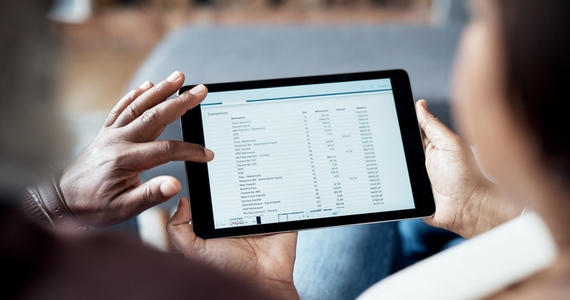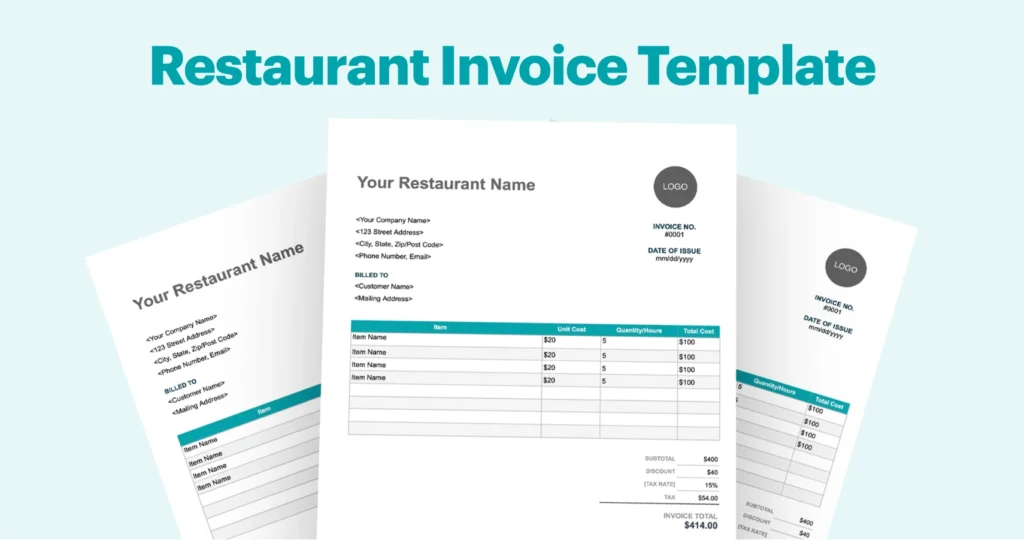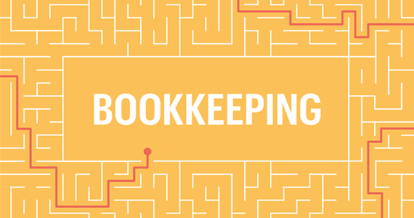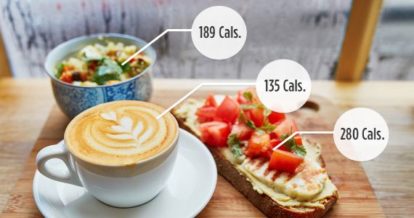Even for the most seasoned, well-rounded restaurateurs, restaurant accounting is often a whole new world and a whole new language. What is a profit and loss statement? How do you calculate prime costs? What’s the difference between bookkeepers and accountants? How to I evaluate restaurant accounting software?
Restaurant accounting can be intimidating – to put it lightly – because it’s a complex practice with many moving pieces measured against industry benchmarks. Restaurant accounting is time consuming, time sensitive, and accuracy dependent. One more thing: it’s also very, very important for your business.
While daunting, learning what you need to know about restaurant accounting is not insurmountable. And when you do, you can reap the many benefits of finance-driven business decisions.
While you won’t leave this article a chartered accountant, we’ll give you the language you need to work with accountants and with restaurant accounting software. In other words, we’ll help you talk the talk, but you’ll still need someone to walk with.
In this article, you’ll learn:
- When to seek an accounting expert
- How to find an accountant that works for your restaurant
- Accounting basics: reports, processes, and KPIs
- Common mistakes and how to avoid them
- The best restaurant accounting software
- How your POS complements your accounting
When to Seek an Accounting Expert
You know the old business adage: know your strengths, outsource your weaknesses.
Let’s face it: unless you were a trained accountant in a former life, bookkeeping isn’t one of your core competencies. Managing the books yourself is the equivalent of hiring an accountant to be your head chef. No bueno.
A trained accountant, whether in-house, part time, or outsourced to a firm, frees you of the burden of complex financial analysis and the time-consuming day-to-day tasks that would otherwise take your time away from managing the operations of your restaurant.
Plus: restaurant accountants are considered experts for a reason. They’re aware of what “good” financials look like within the context of the restaurant industry, and they know which KPIs you should be focusing on based on your business model.
Restaurant accountants understand how to compile data accurately and meaningfully. They are trained to analyze your financials to identify operational shortcomings, cost leaks, and trends that require immediate or long-term action.
An accounting professional can perform any of the following functions:
- General bookkeeping
- Financing options
- Financial analysis
- Business modeling
- Prime cost analysis
- Payroll
- Cash flow
- Overhead analysis
- Budgets and forecasts
- Taxes
- Audits
- Recording sales
- Handling accounts payable
- Reconciliation
- Financial reporting
- Tip reporting

How to Find an Accountant for Your Restaurant
First, here are your options:
- outsource accounting to a large accounting firm
- outsource to a boutique accounting firm
- hire an independent accountant (part time or full time)
Here are a few things to keep in mind when you’re searching for the ideal restaurant accountant:
Most accountants charge by the hour. Rates vary by seniority. If you’re working with a firm, you can control accounting costs by ensuring that junior accountants handle the menial tasks, and your CPA completes the hard analysis.
Choose an accountant that specializes in the restaurant industry. Restaurants have business structures unique to other industries. Because of this, they require specific accounting methods and benchmarks that wouldn’t apply to, say, a retail store.
Bookkeepers vs. CPAs. They aren’t the same role. A CPA provides in-depth operational analysis and tax consulting. Bookkeepers are more task-based and manage accounts payable, payroll, and posting journal entries.
Local restaurant accounting and bookkeeping experts
New York
CFO Business Growth Solutions, LLC Nationwide Restaurant Accounting Services
Bookkeeping Chef
Scott Aber CPA
Chicago
Lehman & Associates
Weiss & Thompson, P.C.
CJBS
Austin
Pickle Restaurant Bookkeeping
Jeff Hufford, CPA, LLC
MJWhite CPM Firm
Toronto
MM CPA Professional Corporation
Reydman and Associates
Vancouver
DMCL Restaurant Services and Food Services
Vancouver Accounting Services
Los Angeles
ABMG Accounting Services for Los Angeles Restaurants
Prime Accounting Solutions, LLC
JeanSimon Financial
Restaurant Accounting Basics: What You Need to Know and Why
No, you’re not getting off scot-free.
You and your accountant will work on certain bookkeeping and accounting tasks together. You’ll also want to know enough about accounting to monitor financial KPIs that will help you make business decisions on the fly.
So here are the essentials of restaurant accounting and bookkeeping when it comes to reports, processes, and KPIs.
Reports
Every restaurant needs a set of reports for the daily, weekly, monthly, and annual monitoring of the financial health of the business. Here is a list of the reports you’ll need for your restaurant accounting – and what they ultimately show you.

1. Daily Sales Report
Every single restaurant should have a daily sales report. The daily sales report is your quintessential end-of-day report that measures costs, sales, and future sales. Revenue (sales, tax, tips, and credit card fees) are reconciled against settlement (accounts receivable, cash and credit card deposits, discounts and coupons, gift certificates redeemed). The result is either cash over or short – but in an ideal world, you’re at zero.
What it shows you:
- How much you made that day
- How much you comped that day
Why you should pay attention to a daily sales report:
- A daily sales report tells you how your business did that day, so you can compare with other days that week, month, year, or even year-over-year. It’s the thermometer you should check before making any changes – or patting yourself on the back after a hard day of work.
2. Chart of Accounts
When it comes to restaurant accounting, the chart of accounts categorizes the money you spend and receive. The chart of accounts records high-level transactions like revenue, expenses, assets, liabilities, cost of goods sold, and equity. Each of these buckets is further categorized into smaller ones, such as meat costs, alcohol costs, staff wages, marketing, utilities, laundry, etc.
Accounting software aggregates your chart of accounts for you and automatically populates reports with the correct information.
What it shows you:
- An overview of your major financial reports, like your balance sheet, profit and loss statement, and cash flow report
- A high-level point of reference when comparing numbers to industry averages and keeping track of expenses
Why you should pay attention to a chart of accounts:
- The chart of accounts gives you a sense of your restaurant’s financial health, so you know how you make and spend money.
- It may be requested by shareholders and investors to show your financial standing.
3. Profit and Loss (P&L) Statement
The P&L statement goes by many names: income statement, statement of earnings, or statement of operations. Your P&L statement reflects sales and costs, and reconciles items like sales volume, food costs, labor costs, operating costs, and your profits.
You and your accountant can use your P&L to review the total revenue and expenses of your business over a period of time.
What it shows you:
- An overall profitability health check
- A guiding post to drive business decisions (cut costs, identify ways to increase revenue, or change business strategy)
Why you should pay attention to a P&L statement:
- A P&L statement is your guiding post to drive business decisions (when and where to cut costs, how to increase revenue, whether to change your business strategy, etc.).
4. Cash Flow Statement
Cash comes in. Cash goes out. Your cash flow report (or statement of cash flows) tracks the flow of cash. When cash comes in, it’s called “cash in” or “inflow.” When cash goes out, it’s called “cash out” or “outflow.” Cash flow statements list the state of your operations, investments, debt, and financing.
What it shows you:
- How much money you have on hand, right now
- Operating cash flow: whether you’re able to generate enough positive cash flow to maintain or grow your operations or whether you should seek external financing
Why you should pay attention to a cash flow statement:
- A cash flow statement shows you whether you’re able to generate enough positive cash flow to maintain or grow your operations or whether you should seek external financing.
5. Balance Sheet
A restaurant balance sheet lists your assets, liabilities, and equity. Assets are things you own, like equipment, inventory, and straight cash. Liabilities are things like vendor bills and restaurant equipment loans.
Your balance sheet also shows your equity, so your net worth; it’s what’s left over at the end of the day when assets are subtracted from liabilities. A negative number means you owe more money than you actually have. Your goal? Make this number positive. This could mean reducing operating costs or finding ways to generate more income to cover debts.
What it shows you:
- Your actual financial position
- Your debt load
Why you should pay attention to a balance sheet:
- A balance sheet helps you know if you owe more money than what you currently have, plus the current value of your assets and overall business.
- This report is also where warning signs would show up when business is in trouble, so you can make changes to prevent closing your doors.

Download this free balance sheet template to track your restaurant’s assets, liabilities, and equity.
6. Revenue Report
Revenue reports display total expected revenue for a period and how the revenue is split between food and drink. You can use revenue reports as a financial projection tool to anticipate how much revenue you’ll generate in the future.
While long-term trend analysis is important, you should also log revenue reports on the daily and weekly. You can also use your revenue reports to show you how to set realistic sales targets and evaluate operations.
What it shows you:
- Your total revenue
- Average revenue per table, per customer
- Average number of receipts and tables
Why you should pay attention to a revenue report:
- Use a revenue report to set sales targets for staff, make decisions about growth, and attract investors.
Why you should pay attention to a revenue report:
- Use a revenue report to set sales targets for staff, make decisions about growth, and attract investors.
7. Controllable Costs Report
Your controllable costs are the restaurant expenses you can control. Controllable costs reports are responsible for tracking your food and beverage inventory and your labor, so that you can determine your operating margin and calculate your prime cost – an essential KPI for every restaurateur.
What it shows you:
- Labor and food costs
- Daily and weekly cost monitoring
- Cost increases to inventory or labor
Why you should pay attention to a controllable costs report:
- A controllable costs report helps you determine your operating margin and calculate your prime cost – an essential KPI for every restaurateur.
8. Financial Forecast
Your financial forecast gives you a rough estimate of how much revenue you’ll generate in the future. Your financial forecast uses your total revenue, gross profit, and operating profit percentage to show you how much you’re spending on controllable expenses and non-controllable expenses – and the profit leftover.
What it shows you:
- Current fiscal conditions
- Estimated future revenue
Why you should pay attention a controllable costs report:
- A controllable costs report gives you a picture of the future environment you’ll be operating in, so you can make decisions ahead of the trends.
9. Start Up Costs Report
A start up costs report helps you keep track of spending when you’re opening your doors.
What it shows you:
- How you’re spending start up capital
Why you should pay attention to a start up costs report:
- A start up costs report helps you stay focused and on budget, so you don’t get to the end of your money before you’ve got what you need to open (might need those tables and chairs).
Bookkeeping Processes

Restaurant accounting is also made up of essential bookkeeping processes that keep your business running. While you’ll most likely hire an accountant or bookkeeper to handle most of these processes, here’s what you need to know so you’re at least speaking the language.
1. Account Reconciliation
Account reconciliation proves that you’ve accounted for all transactions – and that the amount of cash in your checking account is actually correct. Note that modern accounting software can automate account reconciliation.
To reconcile accounts:
- Look at all recorded financial transactions.
- Compare your records against bank statements, credits cards and other financial transactions to ensure the records match. You’re checking to see if your transactions made it from the customer’s hand to the bank.
- Your accountant or bookkeeper will reconcile all bank accounts, payroll liabilities, credit accounts, loans, lines of credit, and financing sources.
Why you should pay attention to account reconciliation:
- Account reconciliation keeps you aware of lost checks, incorrect deposits, or cash variances.
- Account reconciliation also catches accounting errors and keeps track of your transactions.
Reconciling accounts keeps you aware of lost checks, incorrect deposits, or cash variances. Account reconciliation also catches accounting errors and keeps track of your transactions.
2. Accounts Payable
Accounts payable is a bookkeeping process that handles paying invoices from vendors and suppliers, including food inventory. A locked down accounts payable process allows you to pay your bills on time and without error, so that your inventory shipments remain on schedule.
You should always reconcile accounts payable before putting your invoices into your accounting software. To do this, you can use a process known as the “Three Way Match.” First, look at your restaurant’s purchase order, then your receiving order, and finally, the vendor invoice. Make sure that what was ordered was fulfilled, and the amount owed is correct. Once complete, you can proceed with paying the invoice.
Why you should pay attention to accounts payable:
- Keeping up with accounts payable helps maintain good relationships with your vendors, since you’ll be paying those bill on time every time.

Use this restaurant invoice template to create invoices with ease, saving you time and helping you get paid faster.
3. Payroll
Payroll is responsible for calculating and distributing employees’ paychecks. Payroll also keeps a financial record of deductions, bonuses, vacation, sick time, and overtime.
Every employee has a record of their pay, which is included in year-end reports and other financial statements.
Some things you should know about payroll:
- Payroll is complicated and time consuming
- Not every employee will be paid the same: some are paid an hourly rate, another by salary
- Payroll must also track hours and tips
- Your business will need to withhold various taxes and manage deductions
- You’re going to want to hire an expert to do payroll – trust us
Why you should pay attention to payroll:
- You can’t run your business without staff, which means you need know they’re being paid accurately and on time. Mistakes on payroll can cost you your best performing employees – if not more.
Key Performance Indicators (KPIs)

Finally, your restaurant’s success will be measured against key performance indicators. KPIs are what you’ll obsess over as a business owner – they dictate the financial outlook of your restaurant.
Here is the ultimate list of restaurant business KPIs you’ll lose sleep over.
1. Prime Costs
Prime costs are one of the most important KPIs for restaurateurs. Prime costs account for all the costs required to produce and distribute your product. For every dollar that comes in, your prime cost is the amount of that dollar that goes to people (your staff) and product (your menu items).
This is the formula for prime costs:
Cost of Goods Sold (CoGS) + Total Labor Cost = Prime Cost
Ideal prime cost ratio: 55%–60%
Why you should pay attention to prime costs:
- Calculating prime costs help you spot where you can cut costs, increase efficiencies, and boost profits.
2. CoGS and CoGS Ratio
Cost of goods sold is a KPI that indicates how well you’re pricing your products and controlling your inventory. CoGS represents the actual cost of food and beverage used to produce your food and beverage sales. By keeping tabs on your CoGS ratio, you can take action to reduce and contain your inventory costs.
This is the formula for CoGS:
[Beginning Inventory of F&B] + [Purchases] – [Ending Inventory] = CoGS for the period
Ideal CoGS ratio: It depends on your venue type. A restaurant can be profitable with a 40% food cost, as much as a restaurant with 20% food cost can be losing money.
Why you should pay attention to CoGS:
- Keeping track of your CoGs can help you set a menu price for each item at your venue, ensuring every dish is profitable.
3. Breakeven Point
Your breakeven point represents how much revenue you need to earn to cover your expenses.
This is the formula for your breakeven point:
Total Fixed Costs ÷ ( (Total Sales – Total Variable Costs) / Total Sales) = Breakeven Point
OR
Fixed Costs / (1-(Variable Costs/Sales)) = Breakeven Point
Ideal breakeven point: a surplus!
Why you should pay attention to your breakeven point:
- A breakeven point can help you determine your sales goals, so you know what you’re working toward.
4. EBITDA
“Earnings before interest, taxes, depreciation and amortization” is used by restaurateurs, investors, and financiers as a proxy for cash flow. EBITDA represents earnings that are a result of operations only, while stripping away the effects of financing, accounting, and capital spending on your restaurant’s earnings.
Restaurateurs and investors use EBITDA when they’re looking to sell, buy, or invest in a restaurant to help guide their buying decisions. It’s a tool for a valuing a restaurant and gauges a restaurant’s earning potential.
This is the formula for EBITDA based on operating profit:
Operating Profit + Amortization Expense + Depreciation Expense = EBITDA
Ideal EBITDA: Uhhh… that’s a tough one. There’s a ton of conflicting data on this.
Why you should pay attention to EBITDA:
- Restaurateurs and investors use EBITDA when they’re looking to sell, buy, or invest in a restaurant to help guide their buying decisions.
- You can use EBITDA as a tool for valuing your restaurant and gauging its earning potential.
5. Total Sales Per Head
Also known as “sales per seat” or “average ticket” or “average spend per head. You can use this metric to understand breakfast, lunch, and dinner time averages, and track trends over time.
This is the formula for total sales per head:
Total Sales / Number of Customers = Total Sales Per Head
Why you should pay attention to total sales per head:
- Use total sales per head to set and track targets for upselling, marketing to get more traffic, and more.
6. Net Profit Margin
Your profit is the money that’s left over after you’ve accounted for your COGs, labor, rent, equipment, utilities and all other operating expenses. It represents your true profit.
This is the formula for net profit margin:
Net Profit Margin = (Gross Revenue – Operating Expense) / Gross Sales
Side note: (Gross revenue – operating expenses) is your net income. With that in mind, this calculation can also be expressed as: Net Profit Margin = Net Income / Gross Sales.
Ideal net profit margin: Net profit, period – but 6% is the commonly stated average. Profit margins vary by concept.
Why you should pay attention to net profit margin:
- This is your profit, so it’s safe to say you’re already paying attention.
- Knowing your net profit margin helps you make decisions about growth, expansion, investors, and even selling your business for what it’s really worth.
Top 5 Common Restaurant Accounting Mistakes and How to Avoid Them
Just as there is a right way to do restaurant accounting, there is definitely a wrong way. We’re going to assume you’re not an accountant (if you are, you’re probably not reading this article), and so we’re going to tell you some common mistakes to avoid, too.
1. Not using a restaurant-specific accountant
Restaurants have KPIs, reports, and business and tax structures that are unique to the restaurant industry. Not all industries have to deal with tips, weekly reporting periods, and hyper-sensitive labor and inventory metrics. Since accounting is complicated and the restaurant industry is unique, the professional you choose should be an expert in both.
Solution: Hire an accountant with restaurant accountant experience.
2. Bookkeeping errors
To err is human. To miskey numbers when you’re entering row upon row of data is also human. So is failing to recognize meal discounts or mis-logging sales as revenue. When you enter incorrect information into your books, you’re also skewing financial reports and KPIs.
Solution: Automate bookkeeping by linking your accounting software to your POS.
3. Using the wrong accounting period
Not all months are created equal. Some have 30 days, others 31. Four-week periods, on the other hand, are always 28 days with four Fridays and four Saturdays. When you’re comparing accounting periods, you want to accurately compare revenue based on times that should be equally as busy.
Solution: Use four-week periods for accounting, not a monthly accounting period.
4. Infrequent KPI monitoring
You should review your prime costs, CoGs, inventory counts, and labor on a weekly basis, not a monthly basis. These KPIs are controllable, but they can also easily get out of hand if not monitored. If you’re monitoring these figures on a weekly basis, you can patch any cost leaks without incurring too many damages.
Solution: Become obsessive about KPI monitoring through daily reports on your POS.
5. Using the wrong accounting method
There are two kinds of accounting methods: cash based and accrual.
At first blush, cash-based accounting might seem like the best kind for restaurants. It records income as it enters your bank account and records expenses when they’re paid.
But cash-based accounting is not good for restaurants. Why? Because recording income ahead of expenses makes your restaurant seem more profitable than it is.
Use accrual accounting in. This method reports income as it’s earned and expenses as they appear. Not when the transaction clears. Under accrual accounting, CoGS is recorded as inventory is used, not when the suppliers are paid.
Solution: Use accrual accounting. This method reports income as it’s earned and expenses as they appear – not when the transaction clears. Under accrual accounting, CoGS is recorded as inventory is used, not when the suppliers are paid.
Restaurant Accounting Software

Accounting software helps you and your accountant stay on the same page. By connecting seamlessly with your POS, accounting software automates the collection and organization of financial data and transactions.
Along with your POS, accounting software helps you keep an eye on your financial performance in real-time. It also eliminates the time, effort, and many of the errors inherent to manual accounting processes.
Accounting software manages and tracks income and expenses, logs payroll, sends invoice payments, captures tax information, and more.
Here are some accounting software options that integrate with TouchBistro:

Use this restaurant invoice template to create invoices with ease, saving you time and helping you get paid faster.
How your POS complements your accounting
Your POS is the Batman to your accounting system’s Alfred. Your accounting system organizes and tracks financial information.
Your POS, on the other hand, is more than a cash register. You can use your POS data to:
Get financial snapshots. POS technology allows you to see your financial performance in real-time. At any given moment, you peek at your sales-to-labor ratio or determine if sales are meeting historical averages. These financial snapshots give you the power to take action, in real-time with minimal effort.
Identify historical trends. Your POS is a hub for all historical data. With the ability to slice, dice, and drill into that historical data, you can identify underlying trends in different datasets. For example, cross-reference sales by menu category to determine the best time to run a half-price appetizer promotion.
Produce sales and cost reports. Since your POS logs revenue coming in and much of the money going out of your restaurant (credit card refund, food cost, labor), you can use it to analyze sales and costs.
Analyze menu performance. It’s great that a customer raved about a dish, but what are the numbers telling you? Your POS can give you deep insights on best and worst sellers, menu sales trends over time, and your inventory status.
Optimize labor. Shift reports only reveal so much. Modern POSs leverage data analysis tools to give you additional reporting insights into sales by section, voids, and staff activities so you can assess staff performance and cut costs.
Keeping on top of your bookkeeping is worth far more than avoiding tax season headaches. With diligent financial practices, the right expertise, and sophisticated reporting mechanisms, you’re laying a foundation for business decisions based on the financial heart of your restaurant. The more transparency you have into the key performance indicators that monitor the health of your restaurant, the more swiftly you can take decisive action to remedy wounds.
For further reading on restaurant accounting, here is a list of the resources we included in this article:
Download our free inventory template
Sign up for our free weekly TouchBistro Newsletter







